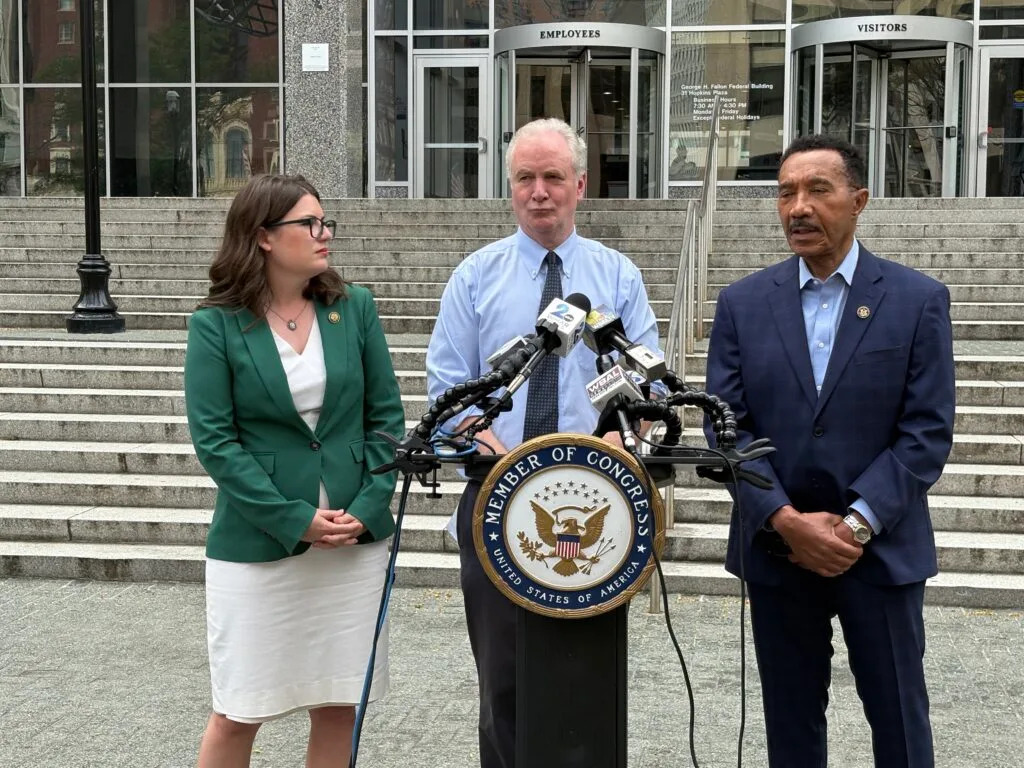
From left, Rep. Sarah Elfreth (D-3rd), Sen. Chris Van Hollen (D-Md.) and Rep. Kweisi Mfume (D-7th) speak to reporters after touring an ICE facility in Baltimore Wednesday. (Photo by Lauren Lifke/Maryland Matters)
Two weeks after they were turned away from the same site, Maryland lawmakers toured an Immigration and Customs Enforcement holding facility in Baltimore Wednesday — but said they left with more questions than answers.
Sen. Chris Van Hollen (D-Md.) and Reps. Sarah Elfreth (D-3rd) and Kweisi Mfume (D-2nd) said their tour of the ICE facility in the George H. Fallon Federal Building in Baltimore provided no opportunity to talk to detainees and few answers to questions they posed to their ICE handlers.
The visit came two weeks after those three, along with Sen. Angela Alsobrooks (D-Md.) and Reps. Johnny Olszewski Jr. (D-2nd) and Glenn Ivey (D-4th), were told they were not allowed to inspect the facility, despite their claim of congressional oversight authority to do so, because the Baltimore site was an office, not a detention center.
But that’s not what they said they saw Wednesday.
“Anytime you detain anybody overnight and for one, two or three days — it’s a detention center,” Mfume said. “They can call it what they like. In many respects, the Justice Department has become the ‘Just – ICE’ Department.”
Requests for comment from ICE officials were not immediately returned Wednesday.
The lawmakers said last month’s attempted inspection was a follow-up to a March visit, in which Van Hollen staffers were among those who saw up to 54 people in holding rooms with no medical staff.
On Wednesday, the lawmakers said they were told by ICE officials that they were not allowed to talk to detainees, though Van Hollen said he believes it is allowed under Maryland law.
Mfume said he was able to see detainees through the glass window to one holding area, which he said looked like it could accommodate up to 30 people. There were dozens of mattresses in the pen but little else by way of furnishings, they said.
“It has the kind of cold feeling that you find in any waystation,” Mfume said.
He said he was concerned about detainees who might have medical needs, those dealing with menstrual cycles or others who might not have access to their daily medications. The facilities were designed as a short-term holding area, Van Hollen said, but have far exceeded that.
“It’s really important to understand that this was designed for 12 hours,” Van Hollen said. “They’ve blown away from that, when they have an average of 72. This is why anybody with common sense would know this is a detention facility.”
Van Hollen said that national ICE data from the end of July showed that 84% of those in detention across the country pose no public threat.
“When the president says he’s focused only on the worst of the worst — that’s just a lie,” Van Hollen said. “Clearly, they’ve not gotten anything from the president that defines the ‘worst of the worst.’”
Elfreth said there is danger for detainees if they don’t get access to due process.
“They can be shipped off to anywhere in this country: Louisiana, Texas, Alligator Alcatraz — without access to an attorney, their medication, contact with a family member,” Elfreth said.
Mfume said the group was not given any specifics. When he tried asking about the nationality of the detainees, he got no answer, he said.
“If you’re not doing that in intake, it’s because you are inefficient,” Mfume said of the detainees’ nationalities.
Nationality and other information about detainees should be collected on intake and should be readily available, Mfume said, but ICE did not provide the lawmakers with the data, nor did they respond to more than 20 other questions the lawmakers had.
“By and large, it was: ‘We’ll get back to all of you,'” Van Hollen said.
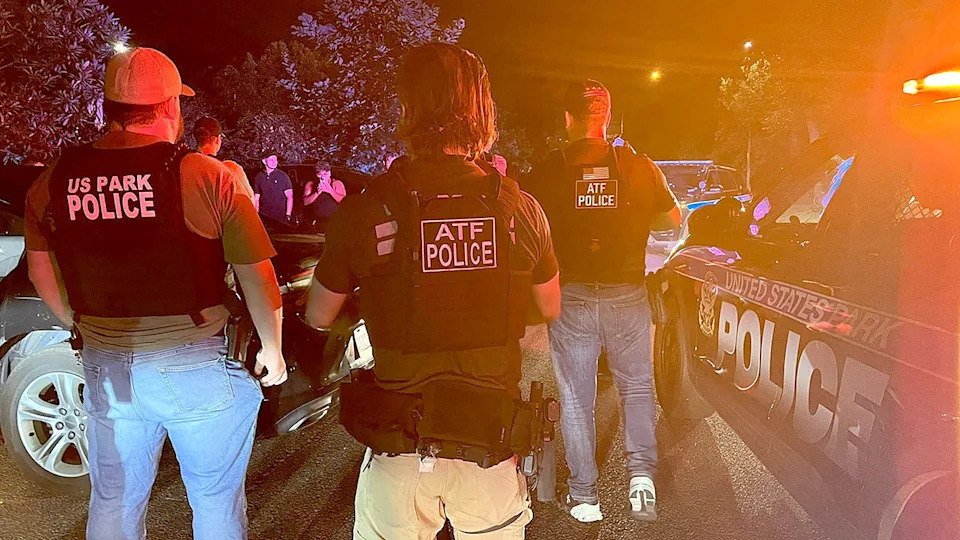


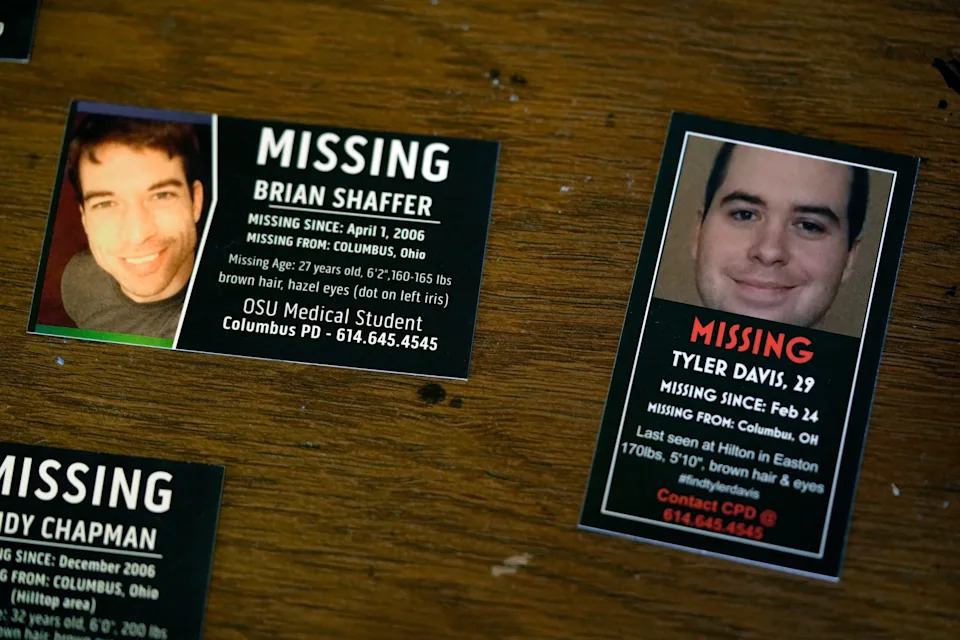
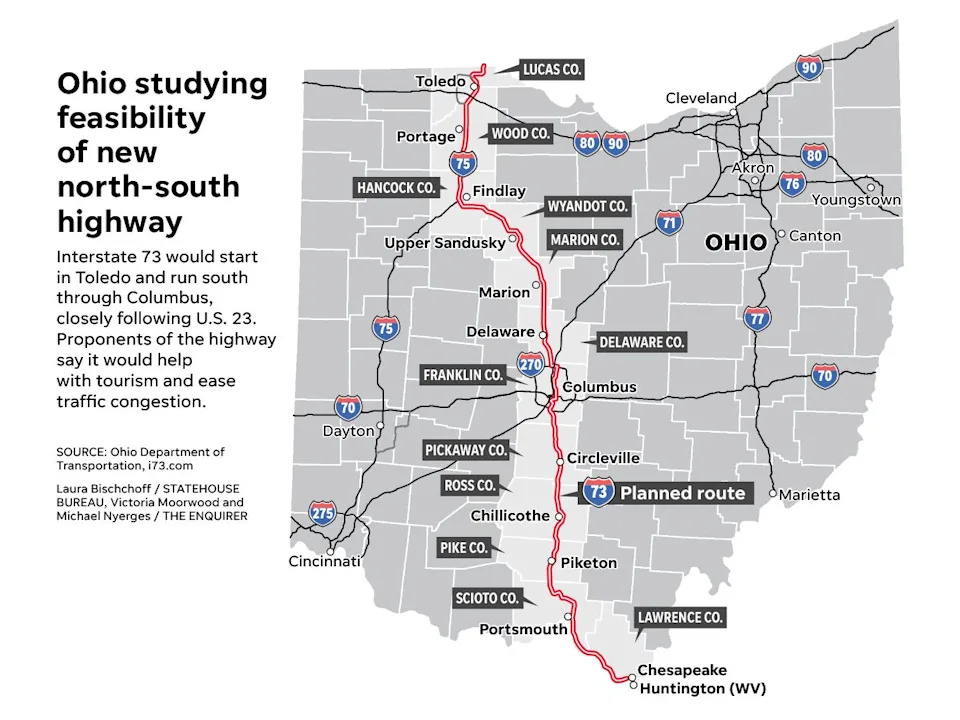


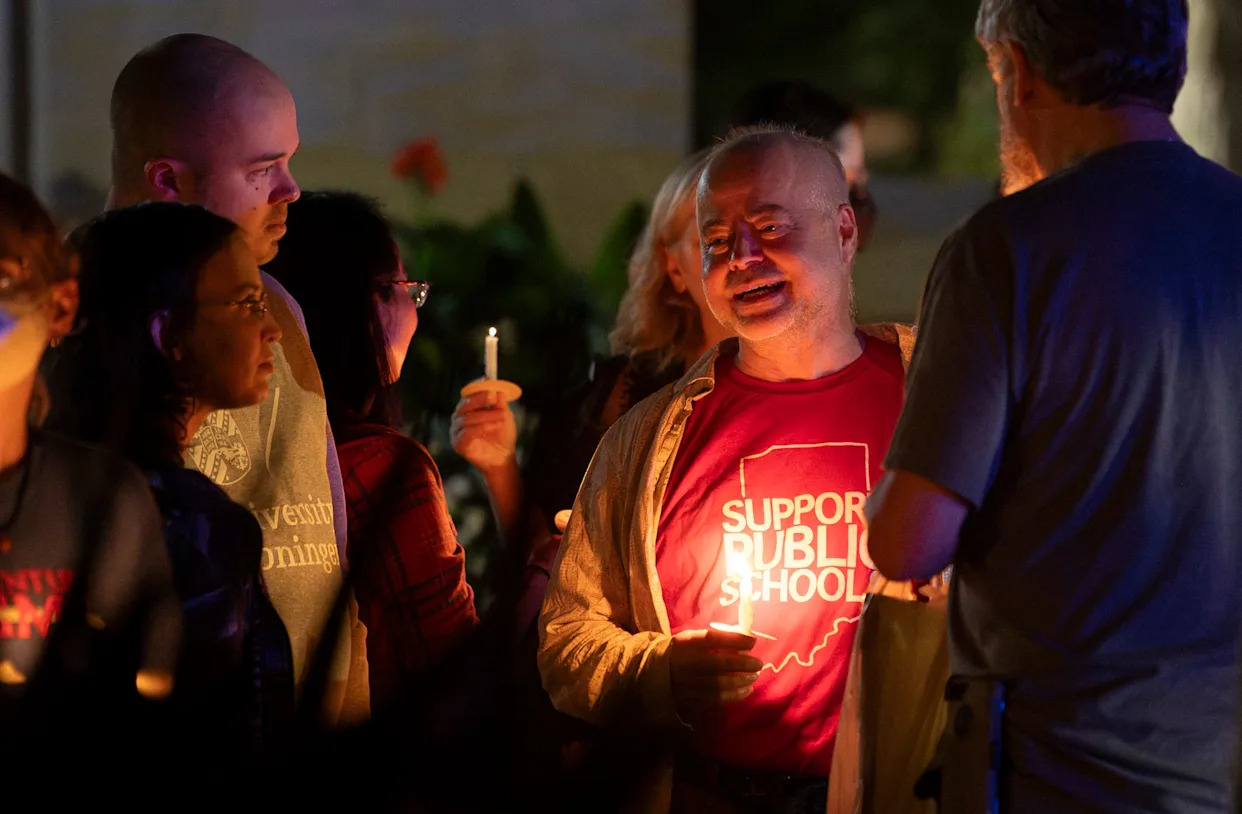
Comments